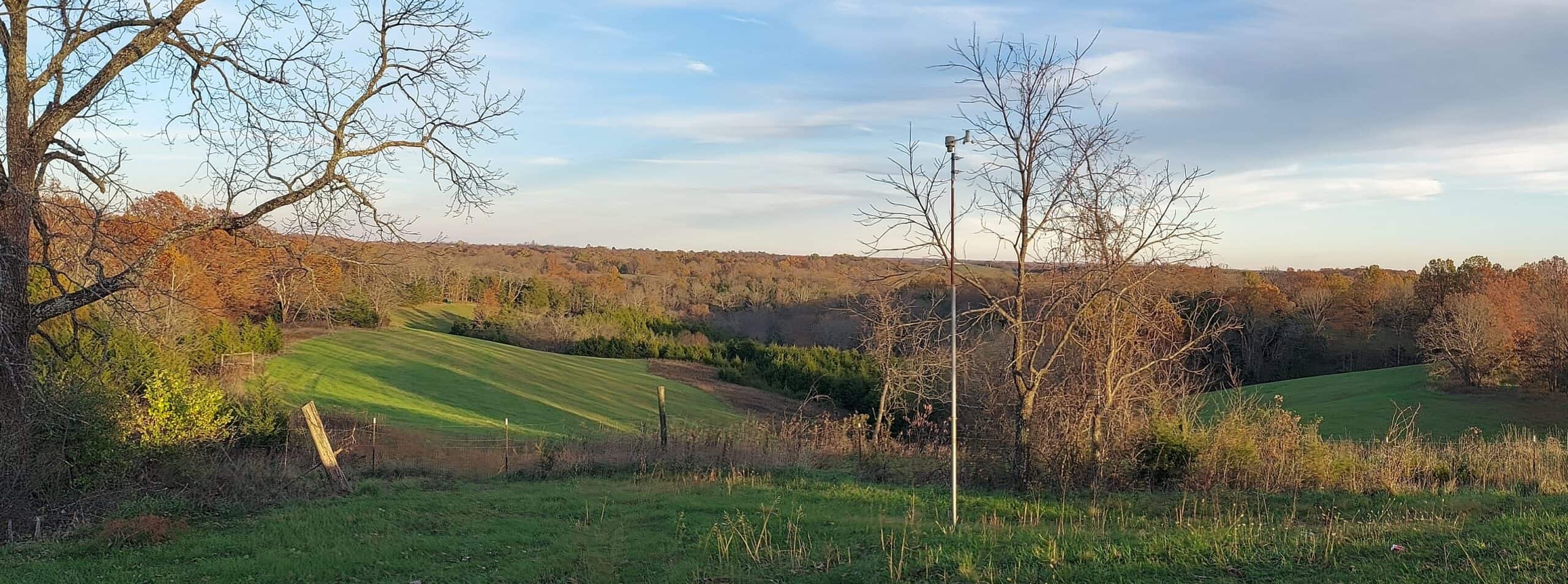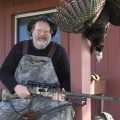Afternoon Tactics– What Blythe Taught me
Mark Hay on T&TH was asking about how I call gobblers in the afternoon, and I thought I’d start a new topic rather than go deeper in the Hunting Pressure thread.
This is a description of what I do on my property when I want to entice a gobbler in the afternoon. I save this tactic for a sunny windy day when. I probably would not be seeing gobblers other ways. I wait until about 2 PM and then go to one of several spots where I have seen gobblers strutting in the afternoon and mimic a hen that is all wound up and frustrated.
What call? Depending on the venue, I usually take a box, my loudest one, and crank out a short series of excited yelps and mix in a cut or a cackle to give emphasis. If I’m sure the gobblers are close by or the wind is less than average, I use a pot call. I have a Toby Benoit Rebel Yell box that works well for this purpose. On my property the wind usually gets to be rather fierce in the afternoon. It really degrades normal hunting opportunities. The theory behind this strategy is that a gobbler may get lonely in the afternoon and start looking for love. The wind throws hen calls this way and that. Therefore a gobbler is going to have a hard time pinpointing where a hen might be. I bring a book, because this is a tactic that is a long and boring.
First, I get all set up. I’ve taken gobblers from the lee of a couple of barns over looking pastures as well as from the little copses and islands in the middle of fields. I set up looking downwind. Upwind is usually not a problem. I have had gobblers come in on my 6, but this was usually because I was calling too much. Your 6 is usually a write-off, because the call will not carry far in that direction. Ideally, you want to see the gob coming from a long way off while you hide in the shadows. I have sometimes spiced up the setup with a single hen decoy about 15 yards out and off to the side a bit.
What gave me the idea for this initially was Blythe, the hen. This goes back over a decade ago. I used to have this horny old hen that would camp out in the lee of one of my barns. She was a hoarse old girl. I named her Blythe after Blythe Danner (Gwyneth Paltrow’s mother) Back in her day, Blythe was a real looker, however while she was starring on Bridget Loves Bernie, she got a bad case of vocal nodules that pretty well wrecked her career. Blythe is long gone, but her crew still roosts less than 200 yards from my back door. Blythe the hen used to go hang out on the downwind side of the barn and crank and crank all afternoon, looking for a partner. Over time, I got to understand how her call carried over the property. In a normal afternoon wind, she’d be calling almost constantly, but you might hear her only every once every 15 minutes.
Once I’m settled in, I let out a series of excited yelps with a cutt or cackle thrown in here and there to give emphasis. I wait until after a gust of wind has gone through. You want this to carry as far as it can. I make the run short, so I can listen for a response. If you get a gobbler to respond, this is golden. Limit yourself to calling every 15-20 minutes. Gobblers are used to the idea that the wind obscures calls. If they are horny enough, they will start walking your way with the slightest hint of where you are.
I’ve started at 2 PM and had gobblers take until after 5 to show up. I have had gobblers come in from 300 yards out. I have had gobblers cross creeks and fences. I bring a book and sometimes take short naps between calling.
Some of the finer points:
1) Do not over call. I do 2-4 runs in an hour, that’s it.
2) Do not respond to the gobbler that honors your call. You want him to come to you, and it may be a long way off. You want him to think you cannot hear him.
3) Do not be discouraged if you do not get an answer. I have had gobblers walk for an hour or more without answering. Remember too, that you are probably upwind from that gobbler. He might be calling and you do not hear him.
4) You want to lay low and not bee making a whole lot of movement. That gobbler may watch your setup for some time before making his final approach.
Here is an example from 2008 of this tactic at work:
The Son of Natural
This post has already been read 497 times!
Views: 0









Comments
Afternoon Tactics– What Blythe Taught me — No Comments
HTML tags allowed in your comment: <a href="" title=""> <abbr title=""> <acronym title=""> <b> <blockquote cite=""> <cite> <code> <del datetime=""> <em> <i> <q cite=""> <s> <strike> <strong>